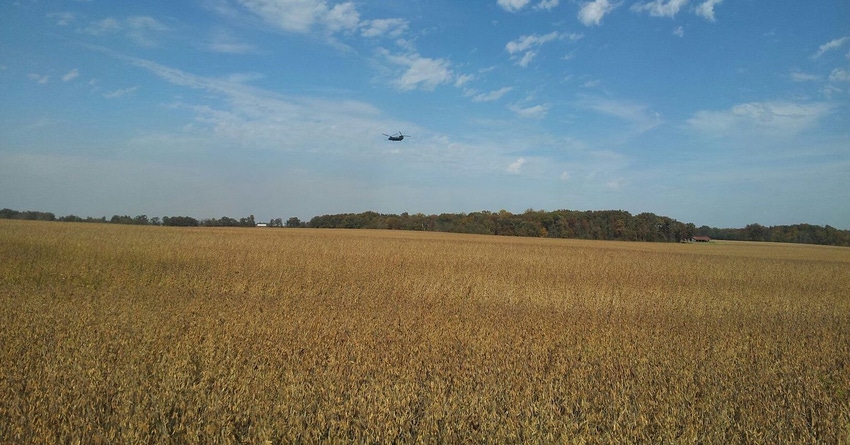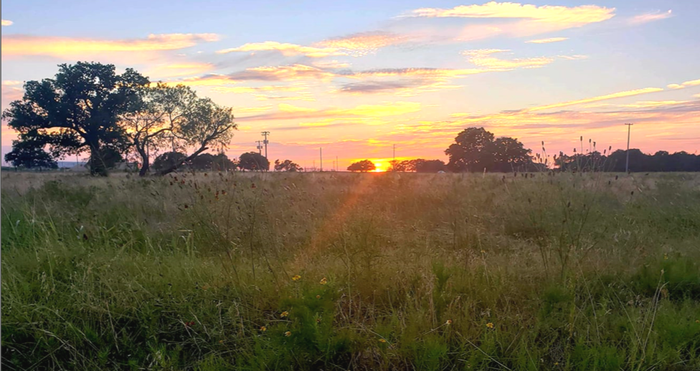
Urban sprawl is a threat to many farmers. It’s a threat to the U.S. military, too. Encroaching development can limit or restrict training at military bases, according to the Department of Defense (DoD).
“Imagine you’re at Hill Air Force Base in Utah. Maintaining dark skies around that base is critical for U.S. military pilots who are training to fly in nighttime conditions. That training is compromised when light pollution from nearby commercial areas spreads,” said Joe Knott, Director of Military Partnerships with Compatible Lands Foundation — a specialized land trust whose primary focus is protecting military readiness while conserving land and natural resources.
“Residents that live in housing developments near military bases complain about the noise and smoke generated by training activities. Those complaints result in restrictions on the time and frequency training activities can be conducted,” he continued. “Over time the conflicts created by encroachment could damage our military’s readiness capabilities. If soldiers receive inadequate training, how will they perform on the battlefield?”
The solution to encroachment, often referred to as incompatible land use, is not more military bases, according to Knott.
“The military has enough land, but we have to be able to use 100% of what we have. That’s where a buffer program helps, and agricultural production is a natural fit for the buffer zones.”
REPI Program
The Readiness and Environmental Protection Integration (REPI) Program was enacted by Congress in 2002 with a goal of limiting encroachment around military bases. The DoD partners with state and local governments and private land trusts, like Knott’s, to preserve land uses that are compatible with military missions. Farms and forests are considered compatible.
“The program does not regulate agricultural practices. We just want farmers to continue to farm, so that our military forces can continue to train unimpeded by outside conflicts,” said Knott.

Under the REPI program, a willing landowner can enter a conservation easement with a land trust that will permanently preserve compatible land use. Landowners retain many of the rights to their land. They can pass on to heirs or even sell, but neither they nor any future owners will be able to develop the land or use it for purposes deemed incompatible in the REPI agreement.
In Meridian, Miss., more than 1,000 acres are in a REPI conservation easement near the Naval Air Station Meridian. The rural lands around the air station allow NAS Meridian to support over 191,000 flight operations a year while training 150 student aviators. Easements on these rural lands along the installation boundary and in high noise areas will permanently protect this important Navy capability.
At nearby Camp Shelby, more than 4,000 acres of forests have been preserved to prevent development encroachment from Hattiesburg, Miss. Protecting surrounding land addresses potential conflicts with airspace, safety, noise and smoke, while supporting an important forest ecosystem.
In its 18-year lifespan, the REPI program has protected more than 757,000 acres at 115 locations in 35 states and territories. Those numbers seem big, but they are just a drop in the bucket. The DoD manages 27 million acres of land on more than 500 military installations. In some cases, compatible use buffer zones can extend 80 miles from a base perimeter.
With President Biden’s goal to commit 30% of U.S. lands and oceans to conservation by 2030, there has been increased interest in conservation easements, as a solution for preserving both farmland and the environment. Today the REPI program operates with a $150 million annual budget.
“The REPI program may be one of the few issues that environmentalists, farmers and military can all get behind,” Knott said.
Benefits of land conservation
The way Knott sees it, the REPI program is a win-win. Protecting military base perimeters and preserving farmland. But benefits beyond the “greater good” include significant tax deductions for landowners. The deduction is calculated according to the value the land would have had if it had been developed (based on independent appraisal). Landowners who are also farmers and ranchers can deduct up to 100% of their adjusted gross income for 15 years up to the appraised value of the easement. For example, a landowner earning $50,000 per year could deduct the entire amount over 15 years, resulting in $800,000 in total deductions. However, you cannot deduct more than the value of the easement.
Landowners can customize their conservation easements to meet their needs.
“You can customize the easement based on your plans and goals for the property,” said Knott. “The goal of the conservation easement is for everyone to benefit while preserving these working lands.”
For example, real estate and commercial development are prohibited, but if you have children or grandchildren that may one day want to build a home on the farm, that can be specified in the agreement.
Concerns
A conservation easement requires much consideration. Like most conservation programs, the REPI easements are perpetual. A future owner or your heirs may not have the same affinity for farming or conservation as you. The future value of the property will likely be diminished as a result of the restrictions of the easement. Landowners should always consult with a tax expert, lawyer and financial advisor before making decisions. It is also crucial to do your due diligence when selecting a land trust.
About the Author(s)
You May Also Like






